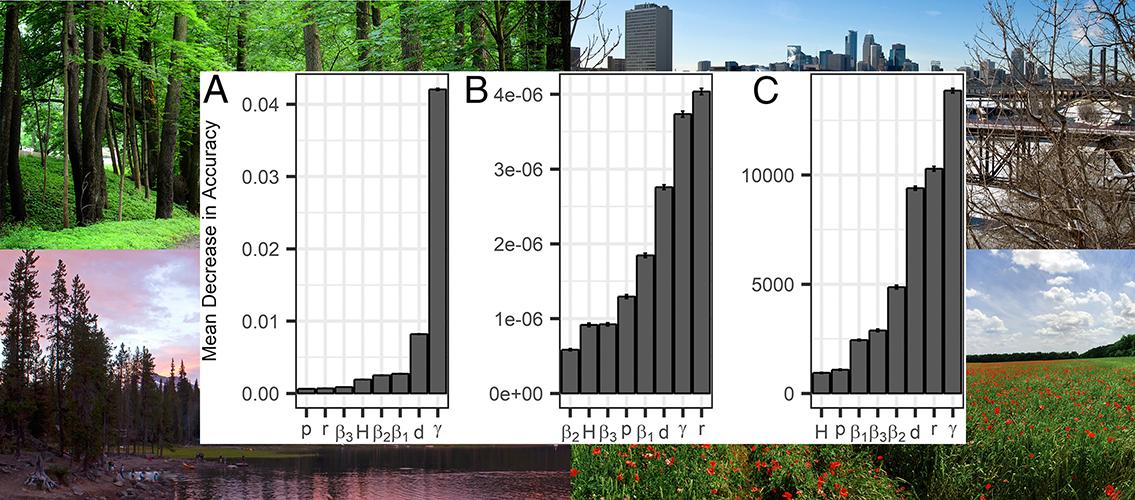
In order to predict and fight animal disease outbreaks, epidemiologists and other researchers need to understand how a given disease spreads through landscapes and populations. Factors contributing to the ability of a pathogen to spread include the features of the environment as well as the movement of the animals through that landscape. Human activity is changing landscapes, with the result that they are becoming increasingly heterogenous (with differences occurring across the landscape). The effect of this increasing heterogeneity on the spread of disease is unclear.
MSI user Lauren White developed a model that incorporates differences in terrain as well as the movement of animals to study how diseases spread through space and time. This susceptible-infected-recovered (SIR) model includes information about how an infected individual would move based on available resources. The researchers can vary landscape features and movement parameters. The model also includes a machine-learning method called random forest analysis that was used to separate the relative contributions of the various parameters. The results showed a counterintuitive finding that a more heterogeneous landscape supported disease outbreaks, but also showed that how a host moved through their environment could have a dramatic effect on disease dynamics. The model was published in the journal Proceedings of the National Academy of Science of the USA in July 2018.
Dr. White, who earned her PhD in Ecology, Evolution and Behavior in 2018, is currently a post-doctoral research fellow at the National Socio-Environmental Synthesis Center. She was co-advised by MSI PI Meggan Craft (associate professor, Veterinary Population Medicine; Craft Lab page) and former MSI PI James Forester (associate professor, Fisheries, Wildlife, and Conservation Biology; Forester Lab page). Professors Craft and Forester are co-authors on the paper, which can be read on the PNAS website: Lauren A. White, James D. Forester, Meggan E. Craft. 2018. Disease Outbreak Thresholds Emerge From Interactions Between Movement Behavior, Landscape Structure, and Epidemiology. Proceedings of the National Academy of Science of the United States of America 115(28): 7374-7379. doi: 10.1073/pnas.1801383115.
Image description: Random forest regression analysis results describing variable importance for (A) outbreak success (did the pathogen spread beyond the initially infected individual?), (B) maximum prevalence given outbreak success, and (C) outbreak duration given outbreak success. Bar charts display an unscaled mean decrease in accuracy for parameters; higher values for mean decrease in accuracy correspond to parameters with higher predictive ability. Error bars reflect SD of mean decrease in accuracy. The randomForest package in R (with 10,000 trees) was used for this analysis. While included in the random forest analysis, transmission rate (β) received a variable importance score of zero for all three metrics (as would be expected, since it did not vary in the factorial design) and is not depicted in this figure. Figure and description adapted from LA White et al. PNAS 115(28): 7374-7379 (2018).
posted on March 15, 2019